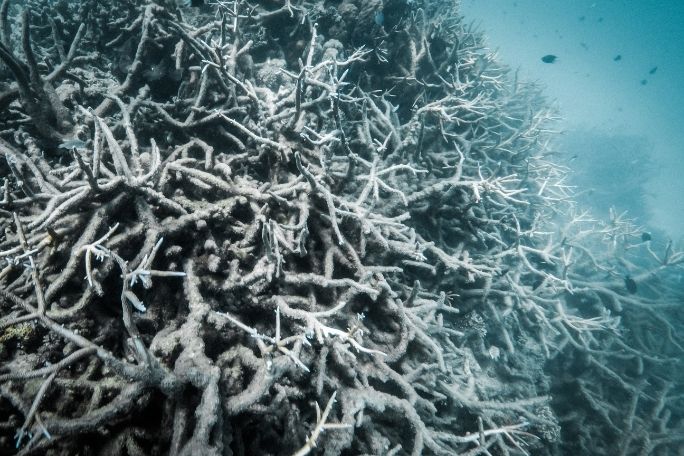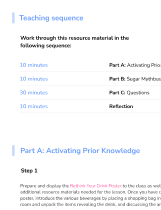Lesson summary
This lesson incorporates clips from Blue The Film as learning inspiration. Students investigate ocean acidification, and its impacts on marine ecosystems and species. They begin by watching a clip and participating in a guided discussion around ocean acidification. Students then work in groups to conduct experiments designed to simulate ocean acidification and create scientific posters to share their results. They will then look at the difference between ocean acidification and coral bleaching. Finally, students are asked to work as a class to suggest actions we can all take to prevent further ocean acidification and coral bleaching events.
Learning intentions:
Students can...
- understand some of the ways climate change is changing our oceans through ocean acidification and coral bleaching.
Success criteria:
Students will...
- be able to conduct an experiment
- be able to analyse experiment results and communicate results to an audience
- know what ocean acidification is and how it affects marine ecosystems
- know what coral bleaching is and how it affects marine ecosystems.
Lesson guides and printables
Curriculum links
Select your curriculum from the options below.
Lesson details
Skills
This lesson is designed to build students’ competencies in the following skills:
- collaboration
- communication
- creativity
- critical thinking
- problem solving
Curriculum Mapping
Australian curriculum content descriptions:
Year 8 Science:
- Chemical change involves substances reacting to form new substances (ACSSU225).
- Identify questions and problems that can be investigated scientifically and make predictions based on scientific knowledge (ACSIS139).
- Collaboratively and individually plan and conduct a range of investigation types, including fieldwork and experiments, ensuring safety and ethical guidelines are followed (ACSIS140).
- Communicate ideas, findings and evidence based solutions to problems using scientific language, and representations, using digital technologies as appropriate (ACSIS148).
Syllabus outcomes: SC4-16CW, SC4-4WS, SC4-5WS, SC4-6WS, SC4-9WS
General capabilities: Critical and creative thinking
Cross-curriculum priority: Sustainability OI.7, OI.8
Relevant parts of Year 8 Science achievement standards: Students compare physical and chemical changes. Students consider safety and ethics when planning investigations, including designing field or experimental methods. They identify variables to be changed, measured and controlled. They explain how modifications to methods could improve the quality of their data. They use appropriate language and representations to communicate science ideas, methods and findings in a range of text types.
Unit of work: Blue The Film – Science – Year 7 & 8.
Time required: 120 mins +
Level of teacher scaffolding: Medium – oversee experiments, lead students in discussion.
UN Sustainable Development Goals
- Target 14.1: By 2025, prevent and significantly reduce marine pollution of all kinds, in particular from land-based activities, including marine debris and nutrient pollution.
Resources Required
- Student Worksheet – one copy per student
- Device capable of presenting a website to the class
- String, masking tape or chalk
- Ocean Acidification Experiment – Option 1
- Ocean Acidification Experiment – Option 2
- Ocean Acidification Image
- Poster making materials
- Scientific Poster Assessment Rubric
Additional Info
Blue is a feature documentary film charting the drastic decline in the health of our oceans. With more than half of all marine life lost and the expansion of the industrialization of the seas, the film sets out the challenges we are facing and the opportunities for positive change. Blue changes the way we think about our liquid world and inspires the audience to action. Find out how to screen or download the film here. Along with the film is an ambitious global campaign to create advocacy and behaviour change through the #oceanguardian movement. To become an ocean guardian, see the website.
Related Professional Learning
How To Teach Sustainability With Hope
Quick summary: This course is for both primary and secondary teachers of all subjects, but especially for English, Science, Humanities and Geography teachers who are covering climate change and the cross-curriculum priority of sustainability.


Welcome back!
Don't have an account yet?
Log in with:
Create your free Cool.org account.
Many of our resources are free, with an option to upgrade to Cool+ for premium content.
Already have an account?
Sign up with:
By signing up you accept Cool.org's Terms and Conditions(Opens in new tab) and Privacy Policy(Opens in new tab).